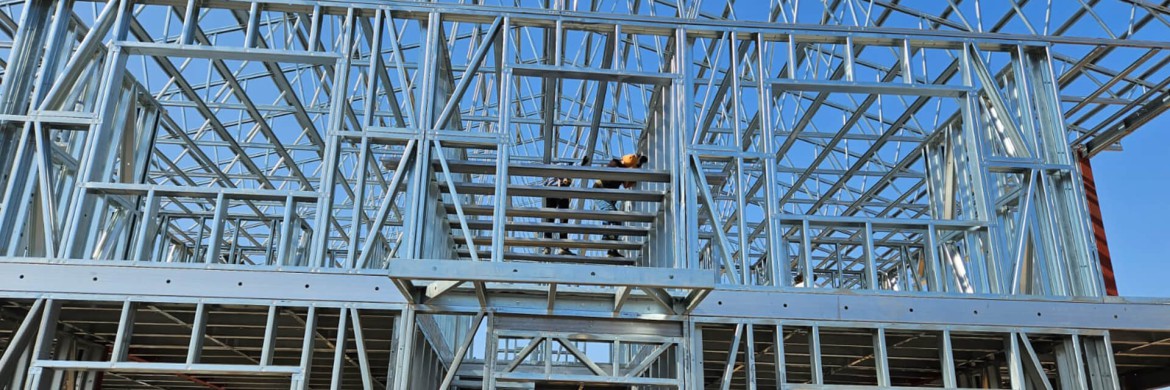What Is a Steel Frame Structure in Construction?
Steel frame structure systems are modern construction solutions that use steel columns and beams to create a load-bearing skeleton for buildings. Known for their durability, flexibility, and speed of installation, they are ideal for residential, commercial, and industrial projects. Their modular design allows for efficient assembly and long-lasting performance in diverse architectural applications.
What Is a Steel Frame Structure?
A steel frame structure is a building framework made from vertical steel columns and horizontal I-beams, designed to support floors, roofs, and walls. It acts as the skeleton of a building, distributing loads efficiently and providing superior strength-to-weight ratio compared to traditional concrete or wood frameworks. These structures are commonly used in industrial facilities, commercial complexes, warehouses, and even residential buildings.
Unlike conventional materials, a steel frame structure can endure extreme weather conditions, seismic activities, and high loads, making it an ideal solution for high-rise construction. The design allows for flexibility in layout and quicker project completion times due to prefabrication. Depending on the type of structure required, engineers choose from various configurations such as the portal frame structure, metal frame structure, or the steel structure frame, all tailored for specific load conditions and usage purposes.
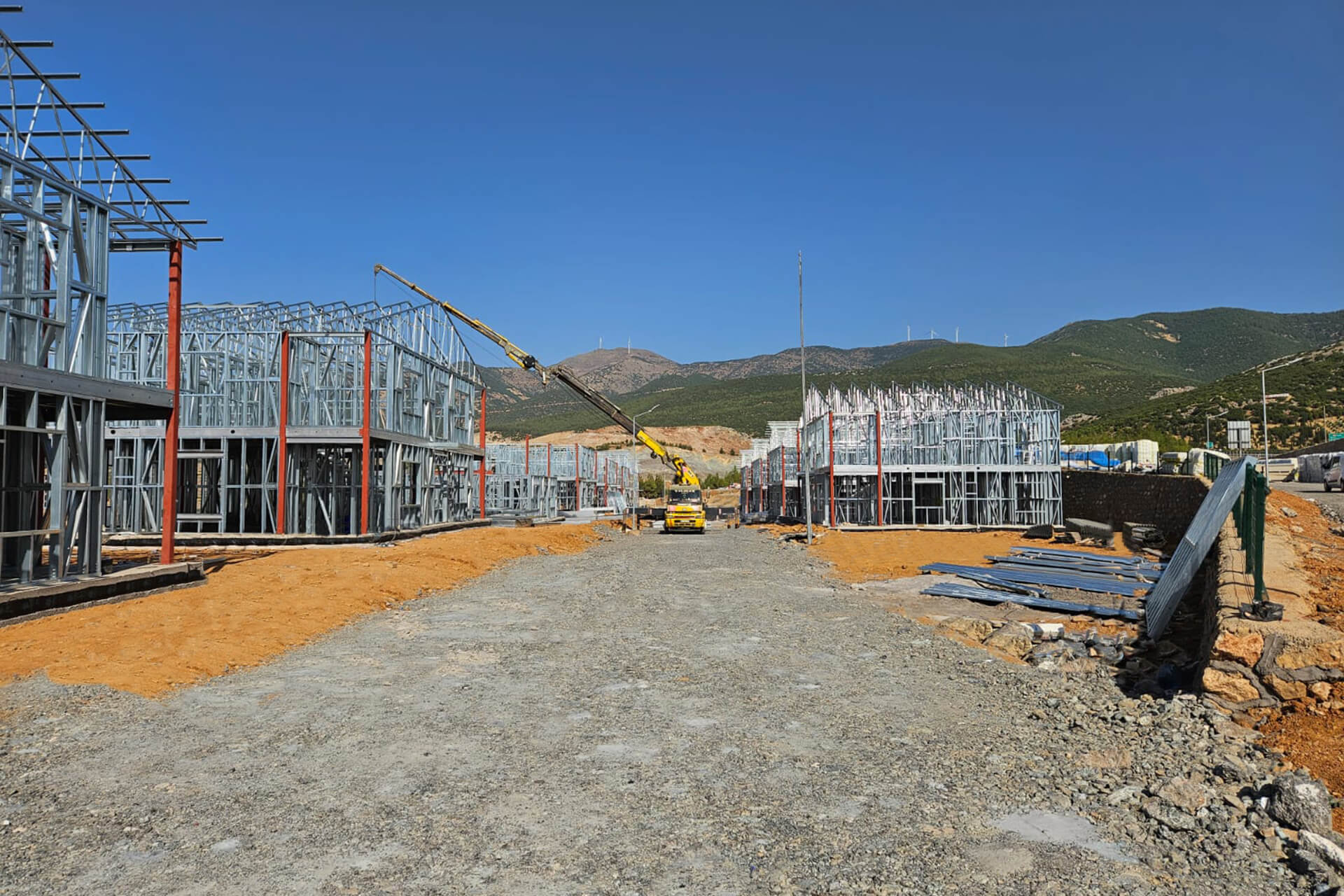
How Is a Steel Frame Structure Built?
Constructing a steel frame structure involves a series of strategic and engineered steps designed to maximize structural integrity and efficiency. The process begins with the detailed planning and design stage, where engineers create a blueprint based on the building’s purpose, location, and load-bearing requirements. This includes selecting the appropriate steel frame structure design, calculating loads, and identifying where each beam and column will be placed.
After design approval, steel components are prefabricated in factories. This off-site process ensures precise fabrication, reducing onsite errors and speeding up the timeline. Once the materials are delivered to the construction site, assembly begins by anchoring steel columns into concrete foundations. Beams are then attached using bolted or welded connections to form the structural skeleton.
As the frame is erected, additional components such as braces, joists, and secondary steel members are installed to enhance stability. Finally, protective coatings are applied to safeguard against corrosion. The modular nature of the steel frame structure allows flexibility in design and quicker construction timelines compared to traditional methods.
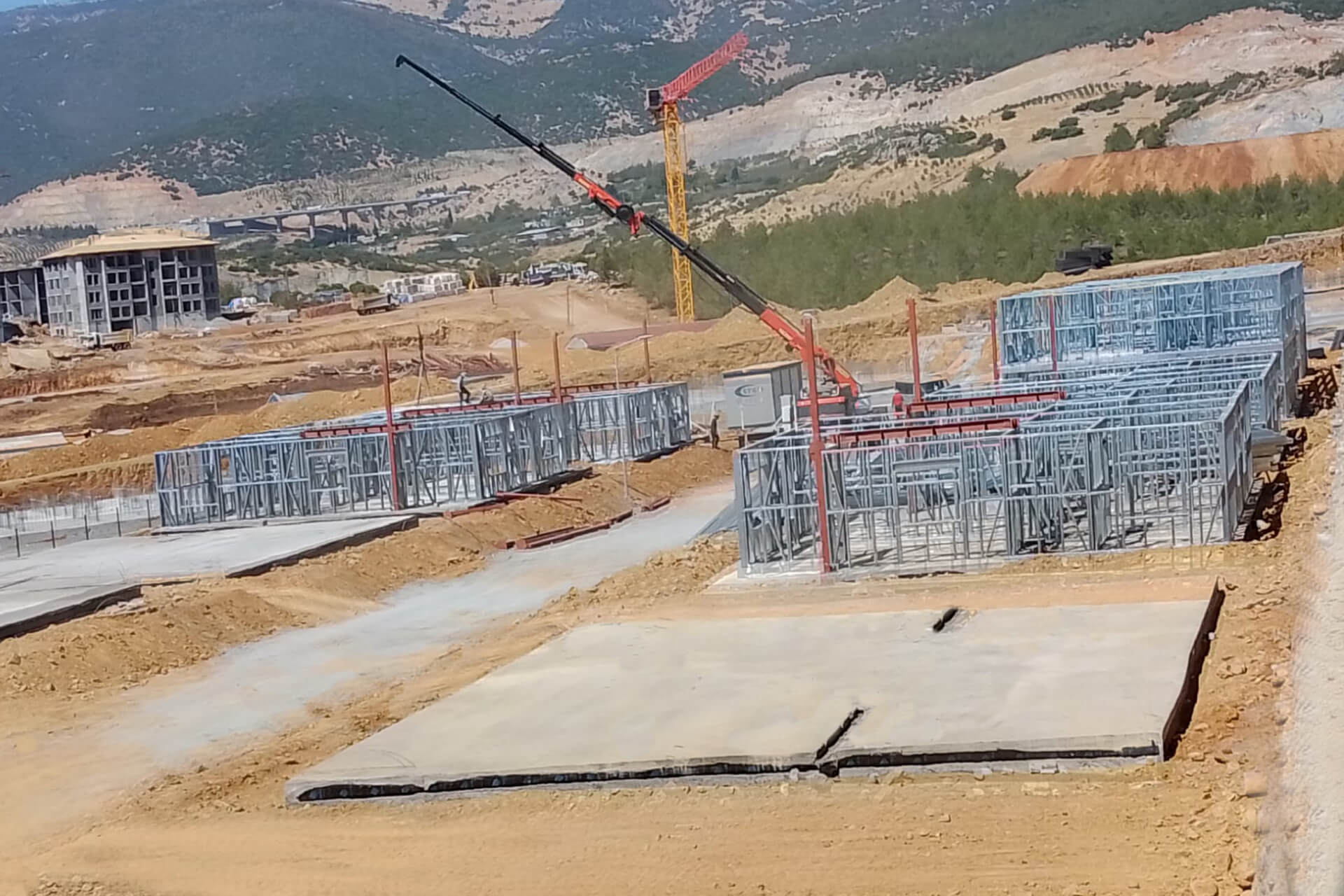
Steel Frame Construction Methods
There are several common methods used in steel frame construction:
- Bolted Connections: Fast and suitable for prefabricated components.
- Welded Joints: Provide stronger bonds, ideal for industrial buildings.
- Modular Assembly: Prefabricated units assembled on-site for rapid construction.
- Portal Frame Structure: Used for wide-span buildings like warehouses.
Each method is selected based on structural needs, building size, and budget considerations.
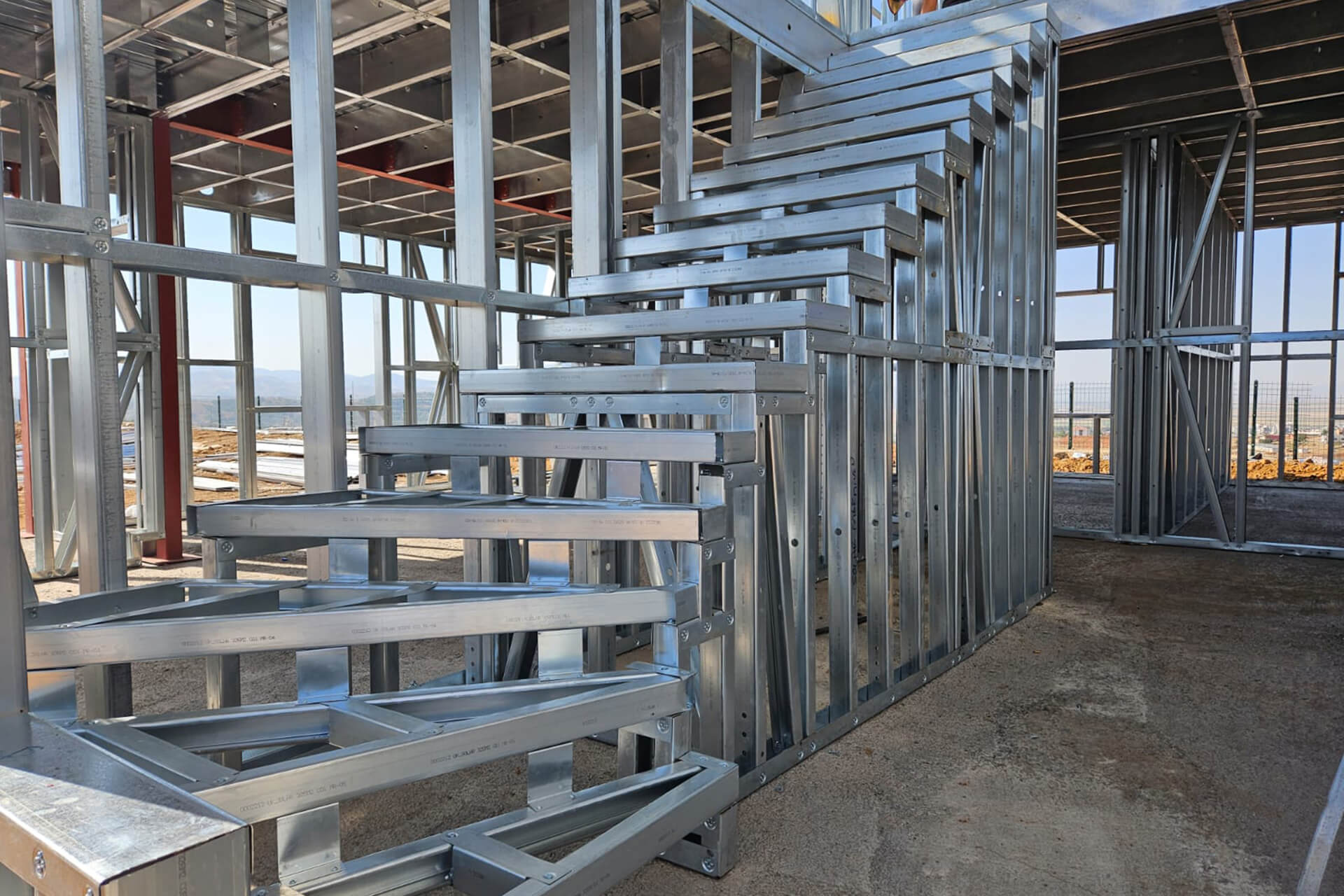
What Materials Are Used in Steel Frame Structures?
The core material in a steel frame structure is, naturally, structural steel—an alloy composed primarily of iron and carbon, with added elements like manganese and silicon for enhanced strength. Structural steel types such as ASTM A36 or high-strength low-alloy steels are commonly used due to their durability, ductility, and weldability. These steel sections are manufactured in a variety of shapes, such as I-beams, channels, angles, and hollow structural sections (HSS), depending on design needs.
In addition to steel, several supplementary materials are essential. Concrete is often used in combination with steel columns and beams for composite construction. Galvanized coatings or fire-resistant paint is applied to prevent corrosion and improve fire safety. In certain climates, weathering steel may be preferred due to its enhanced resistance to atmospheric conditions.
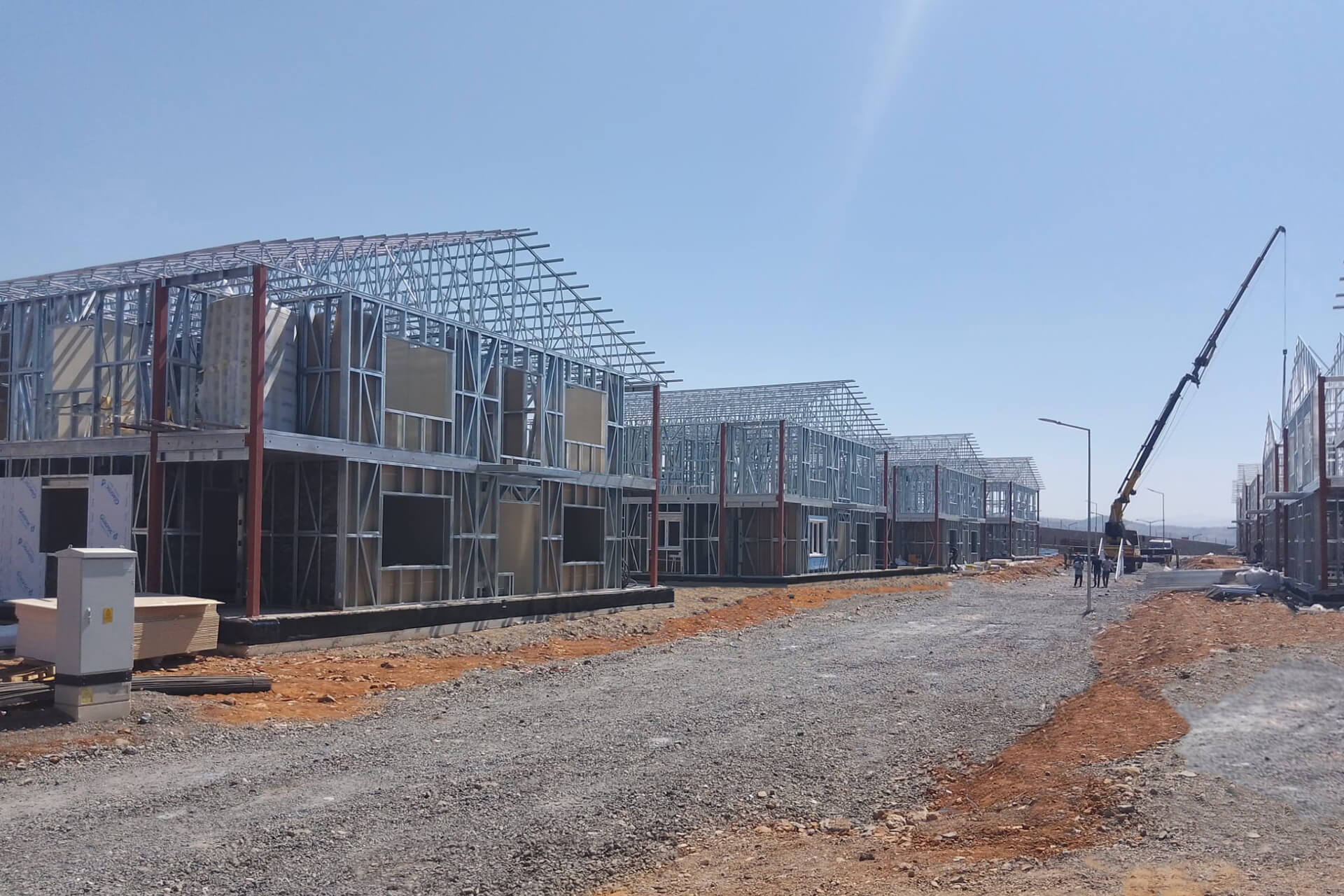
What Are the Key Features of Steel Frame Structures?
A steel frame structure is recognized for several standout features that make it superior to traditional construction methods. First, its high strength-to-weight ratio allows for lighter buildings that still offer excellent structural integrity. This makes steel framing ideal for skyscrapers, bridges, and industrial halls. The versatility of steel enables complex architectural designs, long clear spans, and open interior spaces without the need for internal load-bearing walls.
Durability is another defining feature. Steel is resistant to pests, mold, and fire when properly treated. Its recyclability also makes it an environmentally friendly choice, especially when compared to wood or concrete. The steel frame structure detail includes bracing systems, cross-sections, and connection types that enhance both load resistance and lateral stability.
Innovations in Steel Frame Design and Engineering
Recent advancements have transformed steel frame structure design into a high-tech discipline. Some key innovations include:
- 3D modeling and BIM (Building Information Modeling): Ensures precise planning and clash detection before construction.
- High-performance steel alloys: Enhance load capacity and corrosion resistance.
- Prefabrication technologies: Speed up installation with factory-assembled modules.
- Hybrid frame systems: Combine steel with timber or concrete for optimized performance.
These innovations lead to more efficient, cost-effective, and sustainable buildings.
What Are the Benefits of Using Steel Frame Structures?
Choosing a steel frame structure for construction offers numerous advantages that appeal to engineers, architects, and developers alike. One of the foremost benefits is structural efficiency. Steel provides unmatched strength and flexibility, allowing for tall buildings, wide spans, and complex geometries that other materials struggle to accommodate.
Speed of construction is another key benefit. Since most components of a steel structure frame are prefabricated off-site, they can be rapidly assembled once delivered. This reduces labor time, minimizes construction delays, and significantly cuts project costs. Additionally, the modular nature of metal frame structure systems means they are scalable and adaptable to changes in design or usage over time.
From an environmental perspective, steel is one of the most sustainable construction materials. It’s 100% recyclable and often made from recycled content, contributing to green building certifications. Its fire resistance, termite resistance, and ability to withstand natural disasters like earthquakes or hurricanes make it a reliable long-term investment. These qualities position the steel frame structure as a future-proof solution for modern construction demands.
Where Are Steel Frame Structures Commonly Used?
Steel frame structures are versatile and can be found in a wide range of building types across different sectors. In the commercial domain, they are the framework of choice for office towers, shopping centers, and exhibition halls due to their ability to create large open interior spaces without obstructive columns. The portal frame structure, in particular, is favored in warehouses, logistics centers, and industrial plants where wide, clear spans are essential.
In the residential sector, modern architects increasingly use steel frame structure design for custom homes, especially those with unconventional shapes or eco-friendly features. Educational facilities, sports arenas, airports, and hospitals also utilize steel frameworks because of their safety, ease of expansion, and minimal maintenance requirements.
Additionally, in regions prone to natural disasters, steel frame structures offer peace of mind. Their resistance to seismic forces and high winds makes them the structural solution of choice in earthquake zones and hurricane-prone areas. Whether for temporary structures or permanent buildings, steel frames provide reliable performance across virtually all building applications.
How to Install a Steel Frame Structure?
Installing a steel frame structure is a precise yet efficient process, combining design accuracy with practical construction methods. It begins with surveying and preparing the site, followed by laying the foundation, usually made of reinforced concrete. Anchor bolts are installed into the foundation to secure the steel columns. Once the base is ready, prefabricated steel elements—beams, girders, and braces—are delivered to the site.
Erection follows a logical sequence: columns are lifted into place using cranes, connected by beams via bolting or welding, and reinforced with lateral bracing systems. Throughout this phase, workers use alignment tools and laser levels to ensure everything is square and plumb. Safety is paramount, especially when handling heavy steel components at height.
After the frame is up, it’s inspected for stability before moving on to enclosing the structure and installing utilities. With precise planning and quality control, the steel structure frame can be installed faster and more cleanly than most other structural systems.
Common Challenges in Steel Frame Construction
Despite its benefits, steel frame construction has some challenges:
- Weather Sensitivity: Rain or wind can delay lifting and assembly processes.
- Welding Hazards: Requires skilled labor and strict safety measures.
- Corrosion Risk: Without proper coatings, steel is vulnerable in humid or coastal environments.
- Transportation Limits: Oversized components may need special permits or routes.
Proper planning and engineering solutions can help overcome these issues.
How to Maintain Steel Frame Buildings?
Maintaining a steel frame structure is essential for ensuring its longevity, safety, and continued performance. While steel is incredibly durable, it still requires routine inspections and upkeep to protect against environmental and structural wear over time. The first step in maintenance is conducting regular inspections, particularly after extreme weather events or natural disasters. These checks should focus on identifying signs of rust, joint looseness, structural shifts, or water infiltration.
Corrosion is the most common issue affecting steel buildings. Applying and maintaining protective coatings such as galvanization, powder coatings, or specialized paints is crucial. In coastal or humid environments, this step is especially important. If any areas show early signs of rust, they should be cleaned, treated with anti-corrosive solutions, and repainted to prevent further deterioration.
Another key aspect of maintaining a steel frame structure is checking all bolted and welded connections. Over time, vibrations or temperature changes can cause joints to loosen. These should be re-tightened or reinforced as needed. Also, building owners should inspect drainage systems and roof structures to prevent water buildup that can affect steel components.

